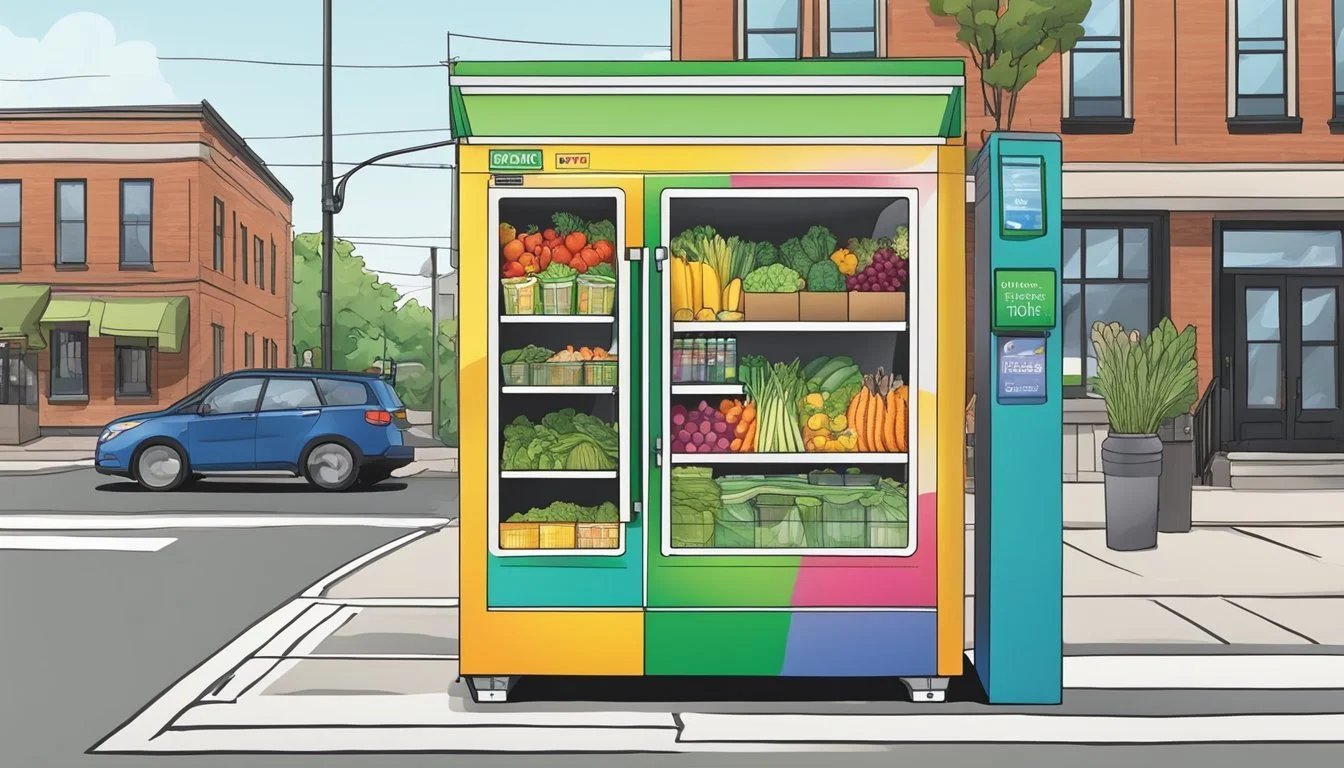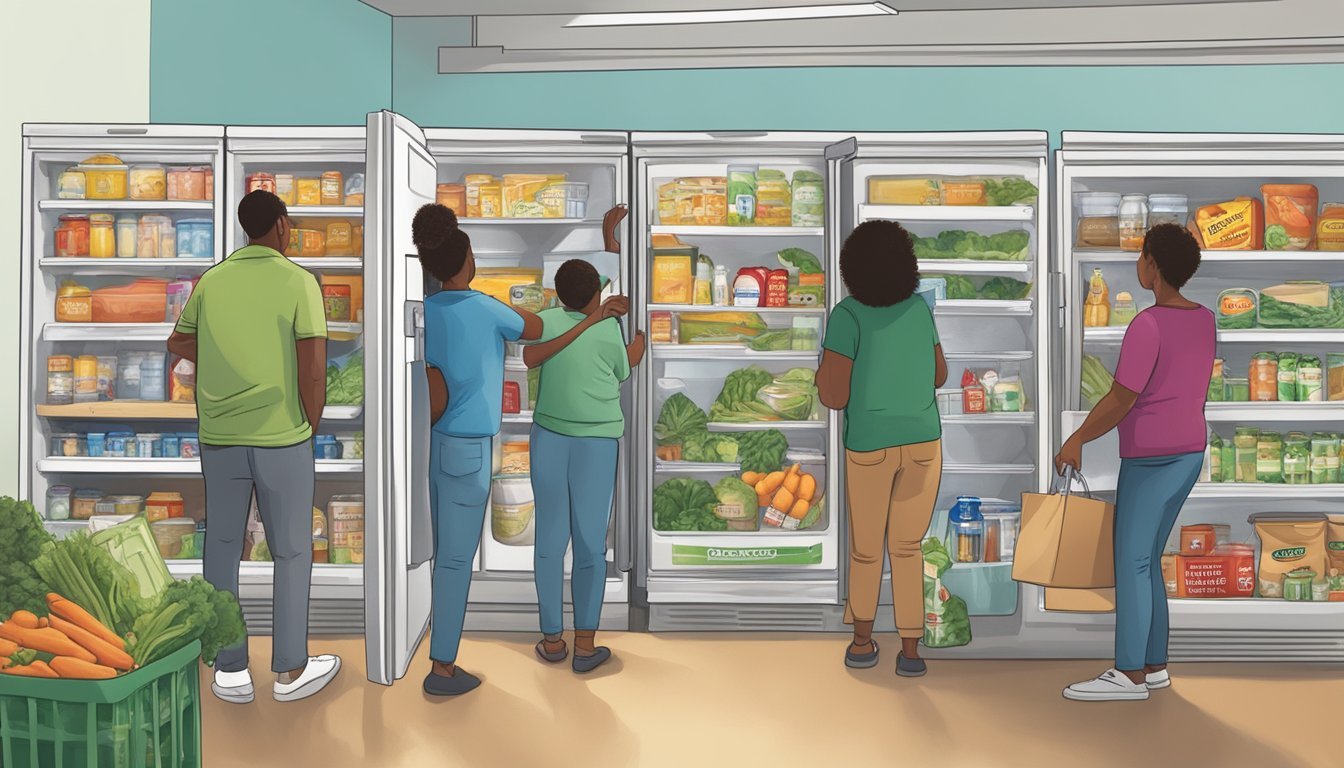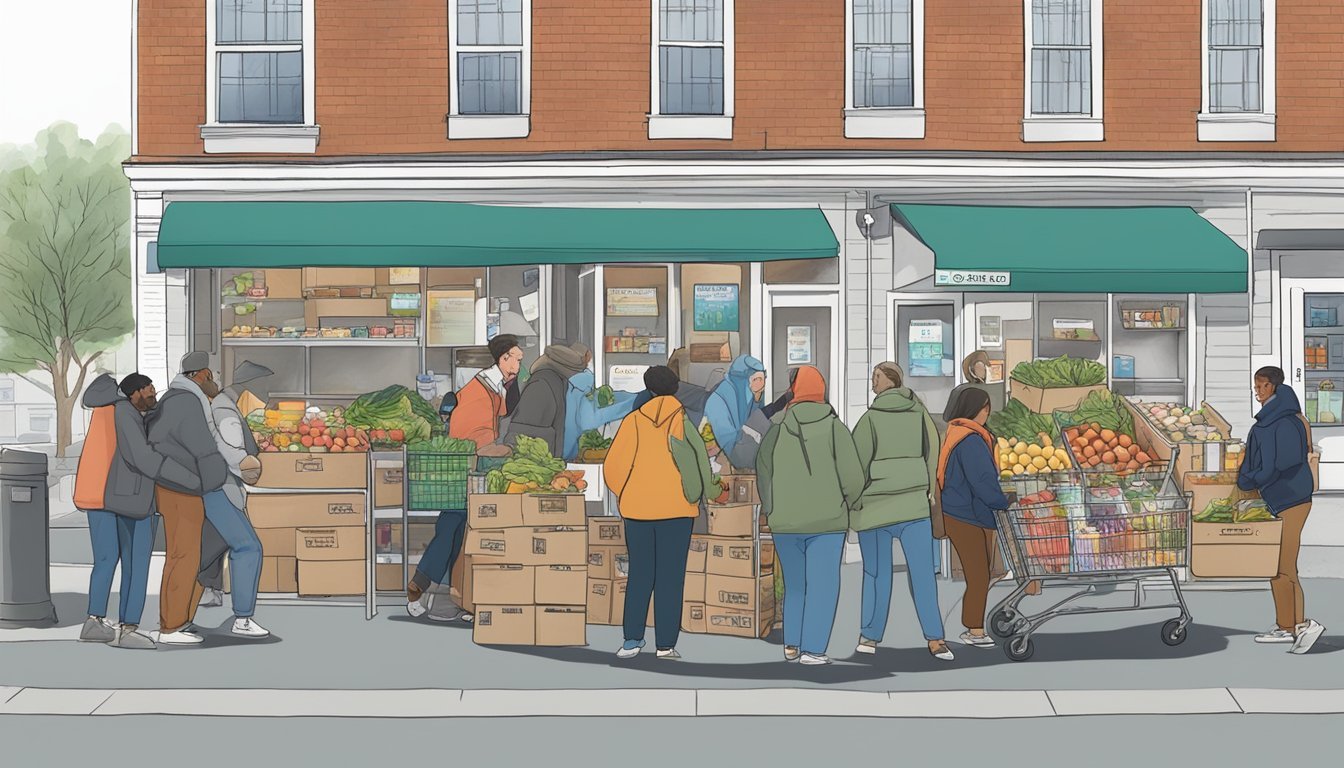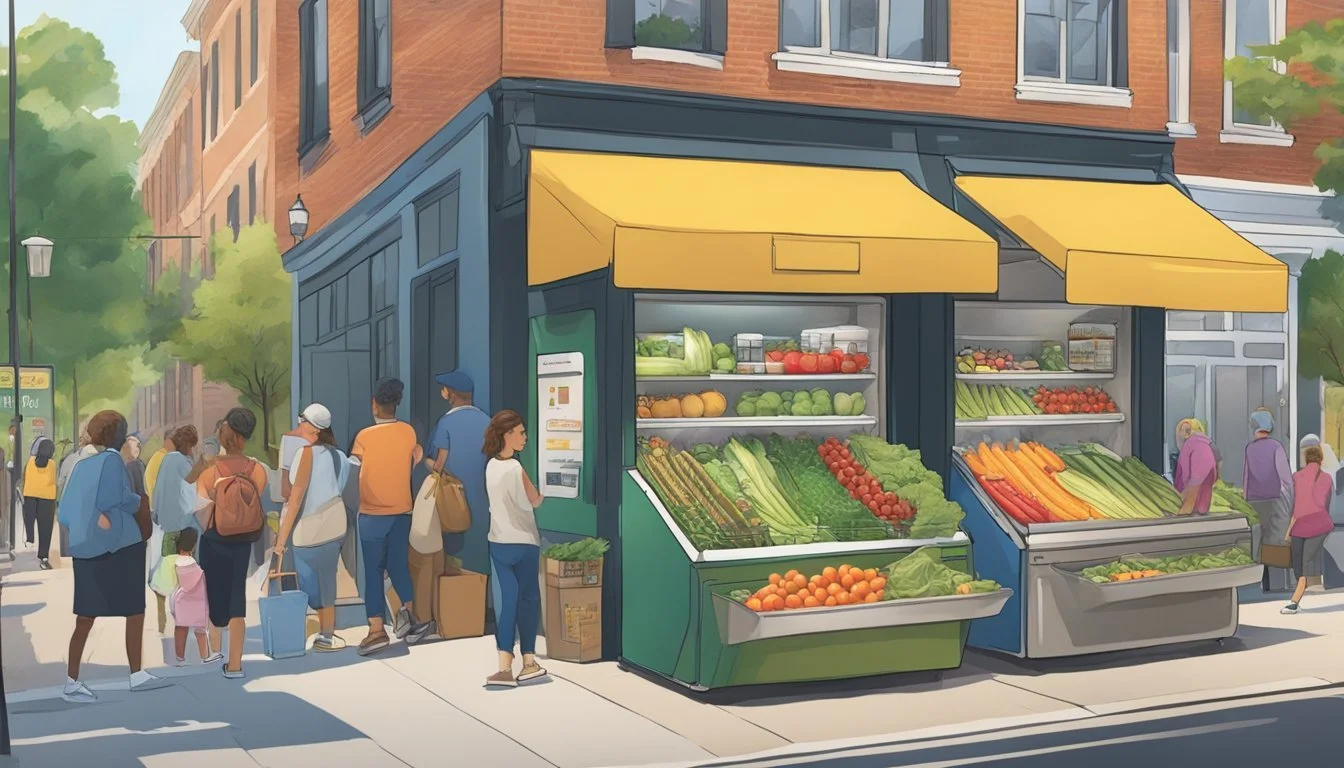Quincy, MA Community Fridge
A Hub for Sharing and Caring in the Community
Community fridges have emerged as a powerful tool in the fight against food insecurity, with Quincy, MA being home to its own refrigerator dedicated to serving the community. Located in an accessible public space, this community fridge allows residents to take what they need and leave what they don’t. By operating under the principle of mutual aid, it provides an essential resource for individuals and families in need, promoting equal access to nutritious food.
The Quincy Community Fridge is more than just a place to access free food; it represents a growing movement toward sustainability and community support. It serves as a point of connection for residents, rallying the community around the central issues of food waste reduction and food insecurity. The fridge is maintained by local volunteers who monitor and stock it, ensuring that the offerings are safe and fresh for those who rely on them.
Efforts like the Quincy Community Fridge demonstrate a commitment to creating stronger, more self-reliant communities. By providing a space where food can be shared freely and without stigma, it not only addresses immediate needs but also fosters a spirit of generosity and collaboration within the community of Quincy, MA.
Understanding Community Fridges
Community Fridges are an innovative solution aimed at alleviating hunger and minimizing food waste, rooted in principles of food justice.
Concept and Purpose
Community Frididges, often referred to as "freedge," operate on a simple premise: they are public refrigerators where community members can leave surplus food or take what they need at no cost. The primary objectives are to:
Reduce food waste by providing a space for excess food that might otherwise be discarded.
Enhance food justice by ensuring equitable access to nutritious food, particularly for those who face economic hardships.
History and Growth
The concept has seen significant growth, particularly in urban areas like Boston. Key milestones in their evolution include:
First community fridge in Boston: Opened in September 2020, catalyzed by COVID-19 induced food insecurity.
Expansion: Over 10 fridges now established, signifying a rapid scaling driven by community involvement and volunteerism.
By operating at the neighborhood level, these fridges serve as a testament to community solidarity and collective efforts in facing food-related challenges.
Quincy's Commitment to Food Security
Quincy, MA demonstrates a robust commitment to addressing food insecurity within the community through initiatives like the Quincy Community Fridge and partnerships that support hunger relief efforts.
Local Impact of Community Fridges
Community fridges in Quincy serve as a beacon of mutual aid, allowing residents to both contribute and take food freely. The Quincy Community Fridge operates on the principle of "Take what you need, leave what you don't," aiming to provide accessible food options for everyone, especially those impacted by the economic downturn during the COVID-19 pandemic. These fridges are more than just food sources; they are a community effort towards securing nutritional needs and fostering a spirit of sharing and caring among the locals.
Partnerships and Support
Local businesses and organizations, recognizing the gravity of food insecurity, offer essential support to hunger relief in Quincy. Quincy Community Action Programs, Inc. (QCAP) has been a longstanding pillar, supplying food assistance for over 50 years with initiatives such as food relief programs and SNAP application aid. Their relentless drive is evident in the recent push for a $2.3 million food pantry renovation, designed to enhance their capabilities in addressing hunger on a larger scale. The community indeed rallies together, proven by partnerships with entities like Project Bread and the community engagement seen during annual events like the "Walk for Hunger."
QUINCY'S COMMUNITY FRIDGE AND QCAP STAND STRONG TOGETHER, EMBODYING QUINCY’S COMMITMENT TO FOOD SECURITY.
Participation and Usage
The Quincy Community Fridge relies on the mutual aid spirit of locals who donate what they can and take what they need. It exemplifies a hands-on approach to address food insecurity and strengthen community bonds through the direct exchange of resources.
How to Use a Community Fridge
Individuals who need food can simply go to the Quincy Community Fridge location and take the items they require. Those wishing to donate can add food directly into the fridge. Guidelines are in place to maintain safety and quality:
Donations accepted: Non-perishable foods, fruits, vegetables, and sealed packaged goods.
Not accepted: Opened packages, expired items, or raw meat (unless the community fridge has a designated freezer section and permits it).
Safety: All food must be checked for expiration and contamination before being left for others.
Volunteer Participation
Volunteers are vital to the operation of the Quincy Community Fridge. They manage regular cleaning, stocking, and outreach efforts to ensure the fridge is a reliable resource for the community.
Roles include:
Fridge Monitor: checks and organizes donated items.
Cleaner: ensures the fridge is clean and hygienic.
Donor Relations: coordinates food drives and donations.
Volunteers follow a set of guidelines to ensure effective and safe management of the fridge. People interested in volunteering can reach out to the community fridge organization directly, often through social media platforms.
Donation Guidelines
When contributing to the Quincy Community Fridge, donors should adhere to specific guidelines to maintain the quality and safety of the food shared with the community. The guidelines ensure that donations are useful, safe, and in alignment with the needs of those utilizing the fridge.
What to Donate
Donors are encouraged to contribute a variety of food items that are non-perishable and those that are fresh but have a reasonable shelf life. The following are suggestions for appropriate donations:
Staples: Rice, pasta, canned goods, nut butters, and other non-perishable items.
Fresh Produce: Vegetables and fruits must be fresh and ready to consume.
Please check for any expiration dates and also avoid items that have been opened or partially used.
Safety and Hygiene
Safety and hygiene are paramount when handling and donating food items. Here are key considerations:
Ensure all fresh food is clean and unspoiled before placing it in the fridge.
Donated items should be in their original packaging with ingredients and expiration dates clearly labeled.
Fresh produce should be free from significant bruises or signs of spoilage to prevent health risks and waste.
By following these guidelines, donors will support the community fridge in offering safe, healthy, and valuable food resources to Quincy residents in need.
Locations and Access
Community Fridges, accessible platforms for food sharing, are found at various sites across Quincy. They operate under the principle of taking what one needs and leaving what one doesn't, and are designed to be freely accessible.
Community Fridge Sites in Quincy
Quincy Community Fridge
Location: The exact address in Quincy can be found on their social media page.
Open: Typically available 24/7.
Electricity: The fridge relies on electricity to keep food items fresh.
Host: The site is hosted by community volunteers and is located in a public area for easy access.
Outreach and Community Engagement
Enhancing awareness and participation within the Quincy community is pivotal for the success of the Quincy Community Fridge. The initiative thrives on social media utilization and organizing community events to maintain its presence and effectiveness.
Social Media Presence
Facebook has emerged as a crucial platform for the Quincy Community Fridge, providing updated information and fostering community involvement. The fridge's Facebook page currently holds a supportive following where members of the community can like or engage with posts, stay informed about the fridge status, and learn about donation needs.
Facebook Group Engagement:
Shares updates on inventory levels
Posts calls for specific donations
Communicates gratitude for community support
In addition to Facebook, although not explicitly mentioned in the search results, it's common for initiatives like community fridges to also use platforms such as Instagram to reach a wider audience, especially younger demographics who may prefer visual content.
Community Events
Community events act as a bridge, connecting different members of Quincy to the community fridge initiative. By volunteering or participating, community members directly contribute to the initiative's momentum.
Volunteer Events:
Enlist locals for fridge maintenance
Organize food drives
Host educational events about food insecurity
Events of this nature not only enhance the fridge’s operational capacity but also solidify the foundation of community trust and mutual aid upon which the Quincy Community Fridge is built.
The Role of Community Fridges During Covid-19
During the Covid-19 pandemic, community fridges emerged as a critical resource in combating food insecurity in many cities, including Quincy, MA. The sudden economic challenges caused by the pandemic resulted in an increased number of individuals facing difficulty accessing sufficient food. Community fridges, often referred to as "freedges," operated as a grassroots solution to this pressing issue.
Operation: Community fridges are typically run by local volunteers and work on the principle of 'take what you need, leave what you can.' These public refrigerators are stocked with food by members of the community, local businesses, and organizations.
Impact:
Accessibility: The refrigerators are strategically placed in public spaces, making them accessible to all, especially those who may not qualify for government assistance.
Reduction of Waste: Food that would otherwise go to waste is offered to individuals and families who need it.
Safety and Sustainability: Amid concerns regarding food safety during the pandemic, organizations behind these initiatives implemented guidelines to assure the health and safety of the public. These guidelines included regular cleaning and sanitization and procedures for safely donating and handling food items.
Community Involvement:
Volunteers: The day-to-day running of the fridges relied heavily on volunteer efforts to clean, restock, and organize food items.
Donations: Local businesses and residents supported the fridges through monetary and food donations.
Community fridges in Quincy became a symbol of community resilience and solidarity, demonstrating that even in times of hardship and uncertainty, solutions fostering mutual aid can thrive.
Beyond Quincy: Community Fridges in Massachusetts
The movement of community fridges extends beyond Quincy, with a variety of fridges actively operating across Massachusetts. These fridges serve as an accessible source of free food for those in need and are a testament to the community's commitment to combating food insecurity.
Boston's Network of Community Fridges
Boston boasts a robust network of community fridges, many of which emerged in response to the increased food insecurity brought on by COVID-19. The South End Fridge, for instance, provides not only refrigeration but also pantry shelves for additional food items. It stands as one of the few accepting raw meat, which must be stored in its freezer compartment.
Boston Fridge Locations:
South End Fridge: Located at Make Shift Boston with a roof and pantry shelves.
Brighton Community Fridge: Easily accessible to local residents.
Roslindale Community Fridge: Another vital location offering food assistance.
These fridges are regularly stocked by members of the community and range across various Boston neighborhoods, ensuring wide-reaching support.
Expansion in Massachusetts
Community fridges have seen expansion throughout Massachusetts, with Cambridge and other areas joining the cause. Driven by volunteers and collective efforts, the fridges symbolize a strong community spirit. They don't have expensive websites but leverage social media to amplify their presence and provide updates on donations needed and fridge statuses.
Notable Points:
Social Media Usage: Essential for realtime updates and communications.
Cambridge Involvement: New fridges adding to the overall network within Massachusetts.
The integration of community fridges across Massachusetts, including prominent locations within Boston and the expanding reach to Cambridge, reflects a community-driven solution to local food insecurity concerns.
Reducing Food Waste
The Quincy Community Fridge operates on principles of sustainability and compassion, actively working to reduce food waste while supporting those in need.
Food Donations and Waste Prevention
Food donations are the cornerstone of the waste reduction strategy at the Quincy Community Fridge. Residents and local businesses, including Trader Joe’s, can donate unexpired, unopened food, thus preventing it from ending up in landfills. This initiative not only supports environmental sustainability by reducing food waste but also bolsters food security within the local community.
Waste Prevention tactics are implemented by encouraging the community to take what they need and leave what they don't. This mindset helps to ensure that the contributions are efficiently used and that less food goes to waste. The system relies on the continuous flow of food in and out of the fridge, maintaining the cycle of sharing and caring, and keeping the contents fresh and utilized.
Supplementary Resources
In Quincy, Massachusetts, the community fridge is part of a broader network of food assistance programs. Residents have access to a variety of support mechanisms aimed at addressing food insecurity.
Other Food Aid Initiatives
The Quincy Community Fridge operates on mutual aid principles, stressing the importance of community involvement. Mutual aid is a core aspect of these initiatives, promoting the idea that everyone can contribute and benefit according to their capacity and need.
Little Free Pantries are a decentralized assistance method where individuals can access food and essential items at their convenience. These pantries complement the community fridge efforts by providing another avenue for aid and contributions in Quincy.
Nearby, the Newton Food Pantry serves as yet another crucial component of the support system. It operates with a mission to guide and provide resources to individuals and families, ensuring they have access to nutritious food and other supportive services.
Example of a simple resource list available for Quincy residents:
Quincy Community Fridge: Accessible 24/7, take what is needed or leave donations.
Little Free Pantries: Scattered locations for convenient pick-up and drop-off of food items.
Newton Food Pantry: Offers scheduled food pick-up and additional resources by appointment.
The synergy between these entities strengthens the communal safety net, ensuring that every individual has a place to turn to when in need of food assistance.
Case Studies
The success of community fridge initiatives is best illustrated through the examination of specific projects that have demonstrated their impact and sustained operations over time.
Notable Community Fridge Projects
Quincy Community Fridge: Launched with community support, the Quincy Community Fridge allows residents to take what they need and leave what they don't. It is a resource aimed at reducing food insecurity and promoting a sharing community.
Coast Community Fridge: Situated closer to the coast, this project is notable for its efforts in providing access to fresh produce and perishables, addressing the nexus between food waste and hunger.
New York City Community Fridges: Demonstrating the scalability of such initiatives, New York City boasts a network of community fridges. These fridges are often decorated with art, making them both a community staple and a cultural talking point.
Newton Community Freedge: Based on the freedge model, this fridge emphasizes equal access to healthy food, encouraging neighborhood sharing and fostering a sense of community through mutual aid.
Worcester Community Fridges: Despite facing challenges such as the weather-related toppling of a fridge, Worcester's dedication to maintaining and supporting community fridges is indicative of the resilience and importance of these projects.
Each project uniquely caters to its community's needs while sharing the core value of combating food insecurity by way of communal cooperation and food sharing.
Call to Action
The Quincy Community Fridge embodies the spirit of mutual aid, operating on the simple yet powerful principle that anyone can donate and anyone can take what they need. The initiative relies on the continuous support of food donations from community members, local businesses, and organizations.
For those looking to contribute, here's how they can participate:
Donating Food: Healthy, non-perishable items and fresh produce are ideal. Ensure that the food items are properly sealed and not past their expiration dates.
Spread the Word: Sharing information about the fridge with friends, family, and on social media helps to maintain high levels of community involvement.
Volunteer: Volunteers are always welcome to help organize and maintain the fridge. Reach out to the program organizers to find out how you can help.
Donation Guidelines:
Fresh fruits and vegetables: Wash and package appropriately.
Packaged goods: Check the expiration date and ensure packages are unopened.
Prepared foods: Clearly label with ingredients and date prepared.
By participating in this community-led effort, individuals help to foster an environment of sharing and caring within Quincy, MA. Those interested in making a contribution are encouraged to get involved in a manner that respects the community's guidelines and ensures the safety and sustainability of the initiative.














